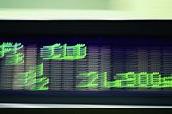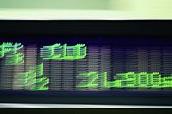
 |
|
| Financial Terms | |
| Wage Flexibility |
|
Information about financial, finance, business, accounting, payroll, inventory, investment, money, inventory control, stock trading, financial advisor, tax advisor, credit.
Main Page: financial advisor, inventory, financial, business, money, finance, investment, credit, |
Definition of Wage Flexibility
Wage FlexibilityEase with which wages adjust in response to excess supply or demand.
Related Terms:Wage expenseThe amount paid to employees for services rendered; synonymous with salary expense and payroll expense. Efficiency Wagewage that maximizes profits. Price FlexibilityEase with which prices adjust in response to excess supply or demand. Real Wagewage expressed in base-year dollars, calculated by dividing the money wage by a price index. Wage/Price ControlsAn incomes policy in which wages and prices are constrained by law not to rise by more than a specified percentage. Wage StickinessResistance of wages to change. Benefit Wage Ratio MethodThe proportion of total taxable wages for laid off  Minimum WageAn hourly wage rate set by the federal government below Annual fund operating expensesFor investment companies, the management fee and "other expenses," Capital market efficiencyReflects the relative amount of wealth wasted in making transactions. An efficient EfficiencyReflects the amount of wasted energy. Expense ratioThe percentage of the assets that were spent to run a mutual fund (as of the last annual ExpensedCharged to an expense account, fully reducing reported profit of that year, as is appropriate for External efficiencyRelated: pricing efficiency. Informational efficiencyThe speed and accuracy with which prices reflect new information. Marketplace price efficiencyThe degree to which the prices of assets reflect the available marketplace  Pricing efficiencyAlso called external efficiency, a market characteristic where prices at all times fully Semi-strong form efficiencyA form of pricing efficiency where the price of the security fully reflects all Strong-form efficiencyPricing efficiency, where the price of a, security reflects all information, whether or Weak form efficiencyA form of pricing efficiency where the price of the security reflects the past price and GENERAL-AND-ADMINISTRATIVE EXPENSESWhat was spent to run the non-sales and non-manufacturing part of a company, such as office salaries and interest paid on loans. OPERATING EXPENSESThe total amount that was spent to run a company this year. SELLING EXPENSESWhat was spent to run the sales part of a company, such as sales salaries, travel, meals, and lodging for salespeople, and advertising. VARIABLE EXPENSESThose that vary with the amount of goods you produce or sell. These may include utility bills, labor, etc. ExpensesThe costs incurred in buying, making or producing goods and services. Accrued expenses payableexpenses that have to be recorded in order for the financial statements to be accurate. Accrued expenses usually do not involve the receipt of an invoice from the company providing the goods or services. Depreciation expenseAn expense account that represents the portion of the cost of an asset that is being charged to expense during the current period.  ExpensesCosts involved in running the company. Office expenseThe amount of expense incurred for the general operation of an office. Payroll expenseThe amount paid to employees for services rendered; synonymous with salary expense and wage expense. Payroll tax expenseThe amount of tax associated with salaries that an employer pays to governments (federal, state, and local). Prepaid expensesexpenses that have been paid for but have not yet been used up; examples are prepaid insurance and prepaid rent. Rent expenseThe amount of expense paid for the use of property. Salary expenseThe amount paid to employees for services rendered; synonymous with payroll expense and wage expense. accrued expenses payableThe account that records the short-term, noninterest- fixed expenses (costs)expenses or costs that remain the same in amount, revenue-driven expensesOperating expenses that vary in proportion to unit-driven expensesexpenses that vary in close proportion to changes variable expensesexpenses that change with changes in either sales volume efficiencya measure of the degree to which tasks were performed labor efficiency variancethe number of hours actually worked minus the standard hours allowed for the production manufacturing cycle efficiency (MCE)a ratio resulting from dividing the actual production time by total lead time; overhead efficiency variancethe difference between total budgeted overhead at actual hours and total budgeted variable overhead efficiency variancethe difference between budgeted variable overhead based on actual input activity and variable overhead applied to production ExpenseThe reduction in value of an asset as it is used for current company operations. Labor efficiency varianceThe difference between the amount of time that was budgeted Operating expenseAny expense associated with the general, sales, and administrative Prepaid expenseAn expenditure that is paid for in one accounting period, but which semi-strong-form efficiencyMarket prices reflect all publicly available information. strong-form efficiencyMarket prices rapidly reflect all information that could in principle be used to determine true value. weak-form efficiencyMarket prices rapidly reflect all information contained in the history of past prices. EfficiencyThe ability to produce the things most wanted at the least cost. Market EfficiencySee efficiency. Current Income Tax ExpenseThat portion of the total income tax provision that is based on Deferred Income Tax ExpenseThat portion of the total income tax provision that is the result Income Tax ExpenseSee income tax provision. Fixed ExpensesCost of doing business which does not change with the volume of business. Examples might be rent for business premises, insurance payments, heat and light. management expense ratio (MER)The total expenses expressed as an annualized percentage of daily average net assets. MER does not include brokerage fees and commissions, which are also payable by the Fund. Operating ExpensesThe amount of money the company must spend on overhead, distribution, taxes, underwriting the risk and servicing the policy. It is a factor in calculating premium rates. Related to : financial, finance, business, accounting, payroll, inventory, investment, money, inventory control, stock trading, financial advisor, tax advisor, credit. |